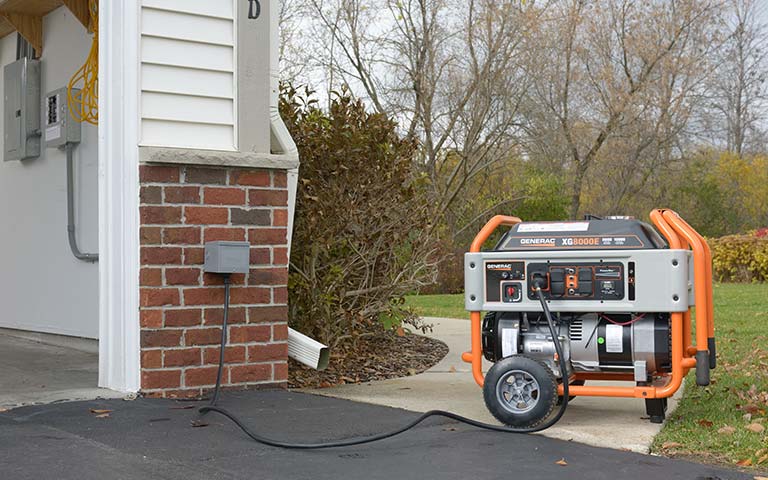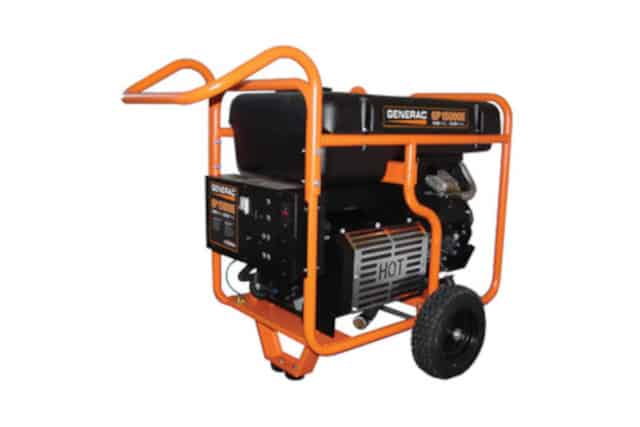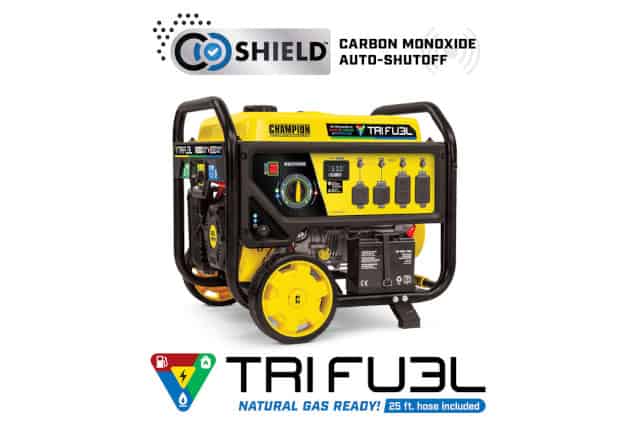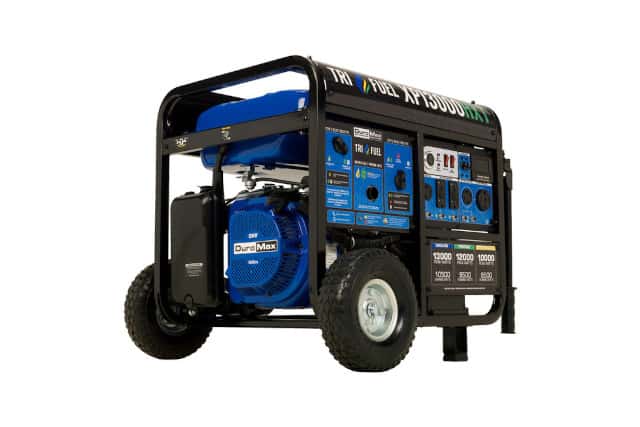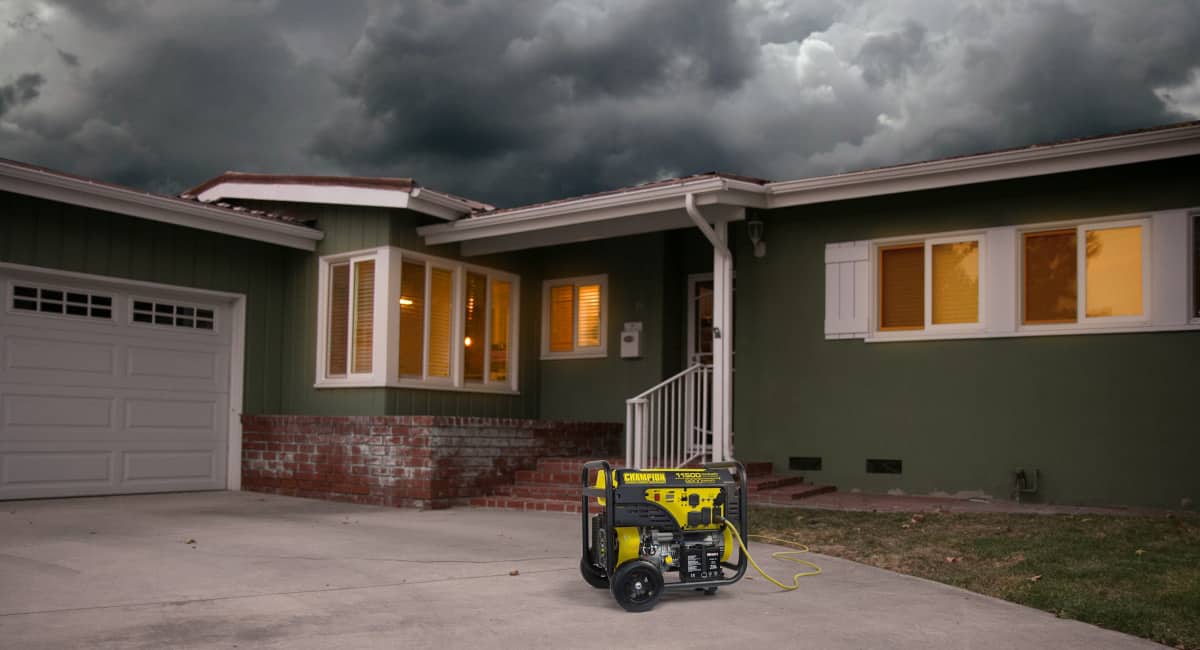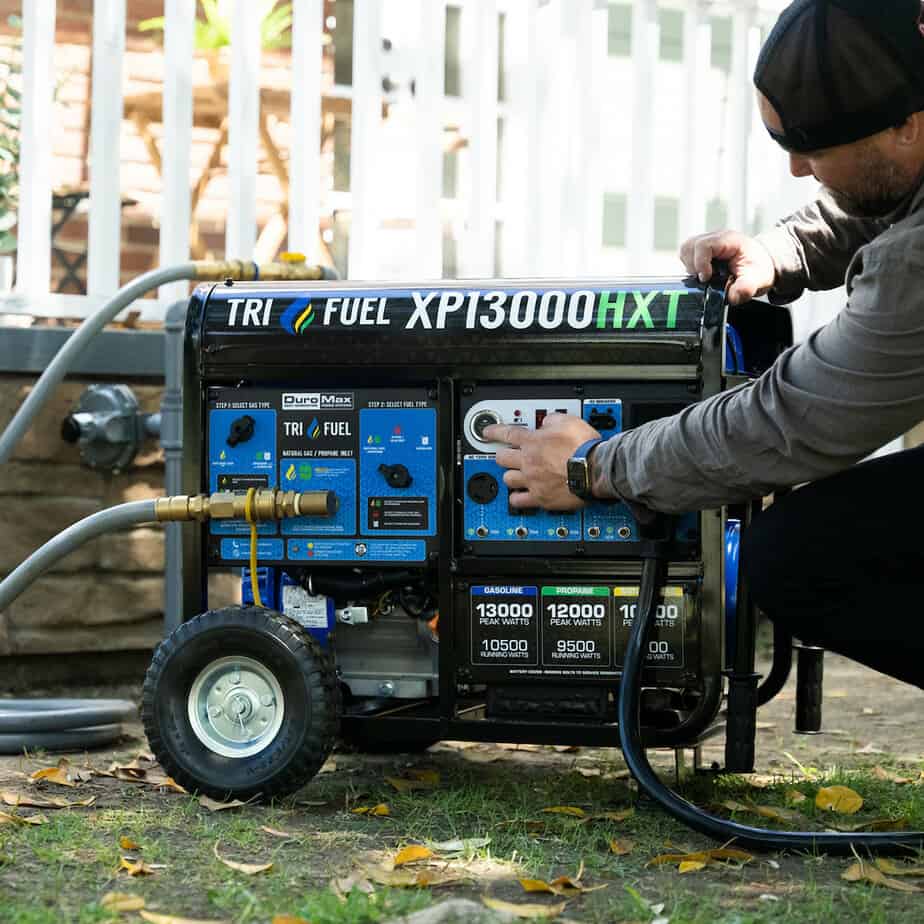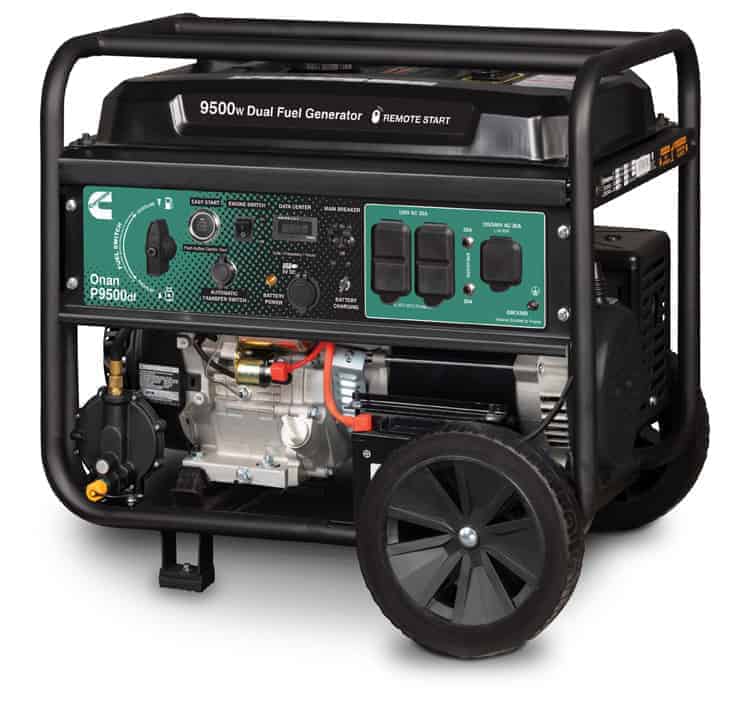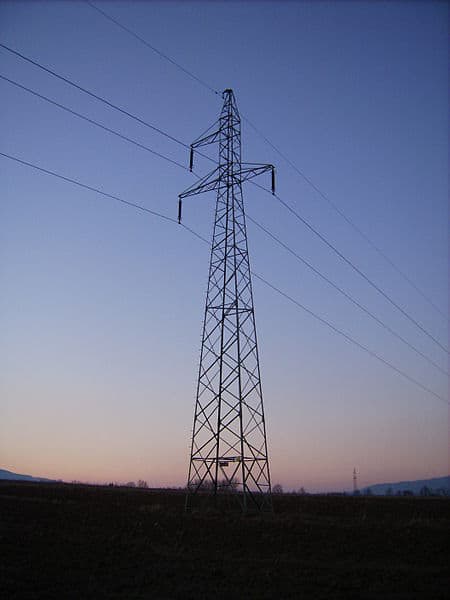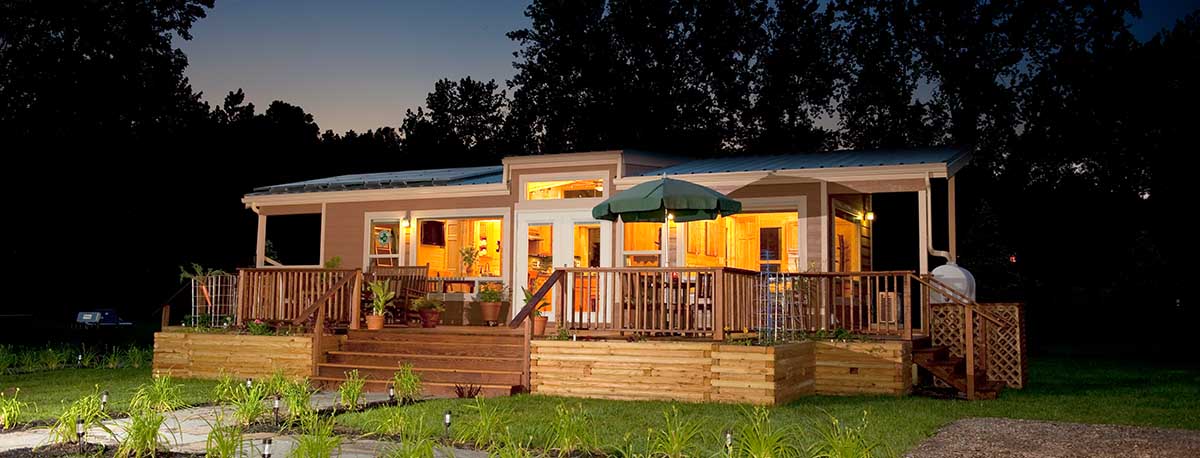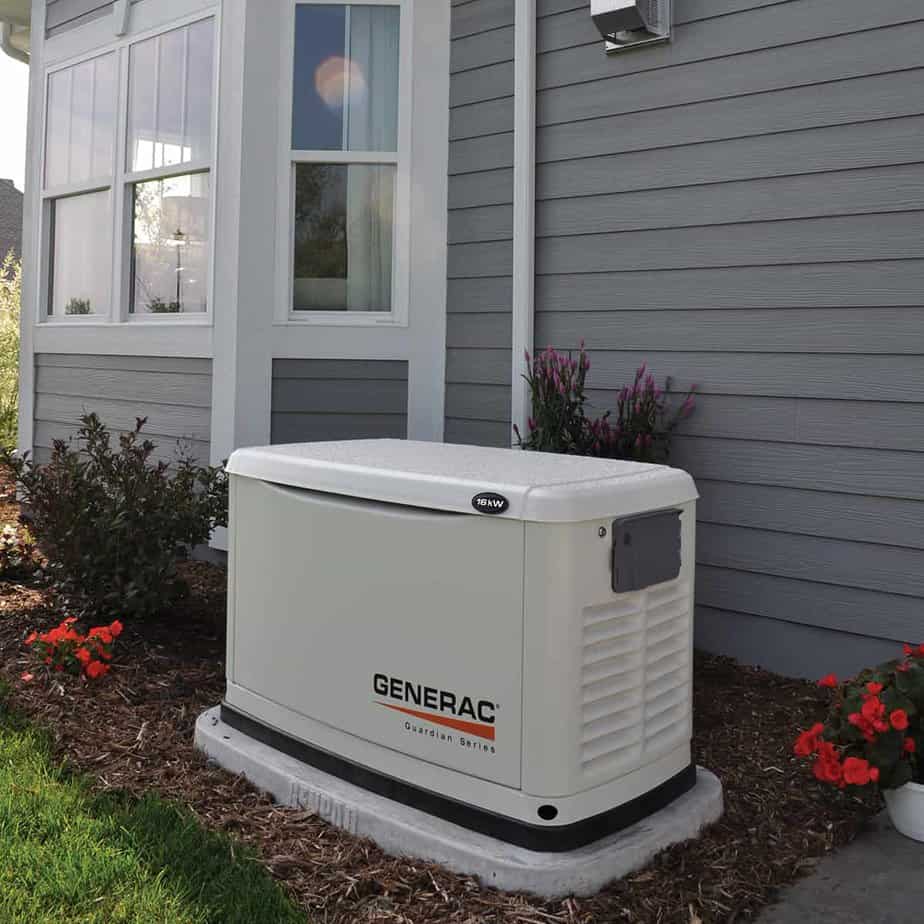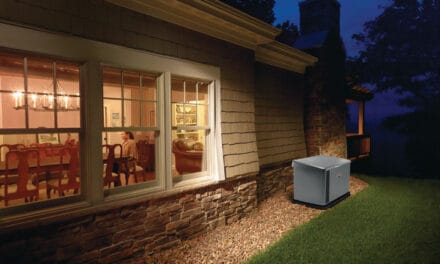The easiest and safest method to power a home with a portable generator is a manual transfer switch with an inlet box. The generator plugs into the inlet box. The transfer switch distributes power to essential appliances and circuits.
Never Backfeed a House with a Portable Generator
Updated July 7, 2022 | Generator Tips | Portable Generators
Portable Generators | Power Outage | Safety | Backfeeding
Backfeeding—the flow of electrical power in a direction opposite the design of the system. “Backfeeding may present unanticipated hazards to electrical grid equipment and service personnel.” (Wikipedia Backfeeding)
Electricity comes into a home from the utility via a transformer. The transformer lowers the voltage from thousands of volts down to 240 volts before it enters the home. In the home, it
passes through the main circuit breaker for distribution through branch circuit breakers to various appliances, lighting, and convenience outlets.
In-Stock Portable Generators for Immediate Shipment
Convenience outlets in the home supply 120 volts with a maximum amperage of 15 or 20 amps. Some appliance outlets for electric ranges or electric dryers supply 240 volts at 30, 40 or even 50 amperes.
Backfeeding is the practice of powering a home with a portable generator during a power outage by connecting it to an appliance or convenience outlet.
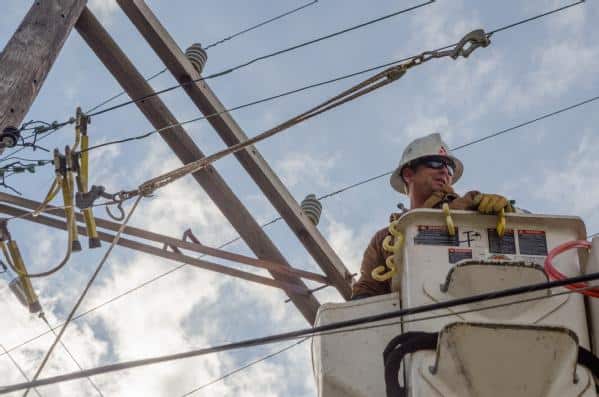
Alabama Lineman Works to Restore Power in Ocean City, New Jersey After Hurricane Sandy
Backfeeding is a dangerous substitute for safer methods of powering your home during an outage.
This Champion 9200 Watt generator with electric start could run multiple appliances and circuits during an outage by using a manual transfer switch. A manual transfer switch help you get the most out of your generator’s power.
Generator Backfeeding
Backfeeding a house with a generator is a dangerous practice and illegal in most jurisdictions. The same applies to businesses and apartments.
People who backfeed their houses connect the generator to an outlet with a homemade cord fitted with two male plugs. With a Generator Backfeed Cord, sometimes called a suicide cord, electrical power enters the main panel through the outlet’s branch circuit breaker. The panel distributes the power to the rest of the house through the other branch circuit breakers. It also feeds power out through the main breaker to the transformer, which then converts it back to thousands of volts and attempts to energize all neighborhood utility lines.
Norwall Power Expert Information and Guides
Energizing the utility lines in this fashion is dangerous and illegal. Workers attempting to restore power to the neighborhood may unexpectedly encounter high voltage on the utility lines and suffer a fatal shock.
Turning off the main breaker alleviates the hazard, but doing so relies on someone to shut the main breaker off. There is no guarantee that someone else will not turn the main breaker back on and energize the neighborhood wires. This arrangement provides no safeguards against accidentally energizing the utility lines or introducing a electrocution hazard in the home.
A Generator Backfeed cord introduces electrocution hazard. If the plug inside the house falls out or is pulled out of the appliance outlet, the cord has 240 volts across its terminals. Anyone stumbling onto the cord or tripping over it may receive an electric shock. Thus the aptly named Generator Suicide Cord.
A convenience outlet usually connects to other outlets and fixtures. Plugging a generator into a convenience outlet energizes all the outlets without the benefit of a circuit breaker to protect the wires. Even if the circuit breaker in the panel trips, the outlets and fixtures remain energized as the wires overheat and possibly start a fire.
The Consumer Product Safety Commission (CPSC Stop Using Male to Male Extension Cords) recently warned consumers to stop using male-to-male cords sold on Amazon for the purpose of backfeeding a home with a portable generator citing a risk of Electrocution, Fire, and Carbon Monoxide Poisoning.
This DuroMax Tri-Fuel runs on Gasoline, Propane, and Natural Gas. With three fuel options, it powers through outages without a refueling interruption. Check oil daily and change according to the maintenance schedule.
Poor Power Management
Backfeeding a service panel energizes the entire circuit breaker panel. The panel distributes power throughout the house on all circuits. Only the largest portable generators have the power capacity to supply enough power for an entire home. Turning some breakers off helps to resolve this issue but does so without balancing the loads.
The generator supplies 240 volts split between two, 120-volt lines. Each line delivers half the generator’s capacity. If most or all essential circuits end up on the same line, the unbalanced load puts a strain on the generator and the home can only use half the generator’s capacity.
CPSC Warns Consumers to Stop Using Amazon Male-to-Male Extension Cords
A 120-volt male-to-male extension cord connection between a regular household outlet and a portable generator will bypass the home’s circuit breaker panel for all other receptacles, outlets, and switches on the circuits, increasing the danger from fire and electrocution.
Automatic Standby Generators Designed for Home Backup and Safety Eliminate Generator Backfeeding Worries
A manual transfer switch is the safest way to power your home with a portable generator
A manual transfer switch is the safest way to power your home with a portable generator
A manual transfer switch isolates the home electrical system from the utility lines before it connects the power from the generator. The switch distributes power to the branch circuits the homeowner selected during installation. Each circuit has its own breaker, and electrical power can’t leave the dwelling. It won’t power the neighborhood utility lines or endanger workers.
When the utility restores power, the transfer switch protects the generator from damage caused by the sudden introduction of another power source.
The generator load remains balanced because the transfer switch distributes the load equally between the two 120-Volt lines. The balanced load puts less strain on the generator, saves fuel, and allows utilization of the generator’s full capacity.
Illegal Backfeeding
Backfeeding is a dangerous practice and illegal in most places. It violates the National Electrical Code. If you backfeed your home’s electrical system and injure or kill a worker or anyone else, you are liable and accountable, and face a very real possibility of criminal prosecution for your actions. Further, even if your actions don’t injure anyone, if the utility finds that you are backfeeding their lines, you may be subject to fines or the utility may disconnect your home.
Your homeowners insurance may void your insurance policy if you injure or kill someone by backfeeding. If this happens, you will be held responsible for any liability. You may also find yourself subject to fines by your local community or the authority having jurisdiction over building codes and enforcement.
Be safe and avoid problems. Install a manual transfer switch or hire a qualified electrician to do it and be ready for the next power outage. It’s not worth the danger or the risk. A manual transfer switch ensures essentials like refrigerators, furnaces, and sump pumps have power from a safe, reliable connections.
Did You Know?
A standby generator provides automatic backup power seconds after an outage hits, runs for days or weeks without refueling, and may qualify you for insurance discounts and increase your home value.
Backfeeding is the practice of using a portable generator to supply electricity to a home through an outlet & homemade cord. It puts utility workers' in danger when they're working to restore service. This article from @NorwallPowerSys explains why. https://t.co/yFzVVmp6M1 pic.twitter.com/ziy6r8PYR6
— Huntsville Utilities (@HSVUtilities) August 21, 2020
Own a generator? Make sure you also have a transfer switch to prevent harmful backfeeding. #NESM2016 via @ESFIdotorg pic.twitter.com/yYNCGXHlqk
— NV Energy (@NVEnergy) May 26, 2016
#Iowans, is your #electricity still out?
— Brian Brown (@IowaBusiness) August 13, 2020
If your thinking about using a #Generator, be careful. #Backfeeding is dangerous...https://t.co/l0cJUftxMH
Backfeeding with a #Generator is Dangerous @fema A Better Solution is a Manual Transfer Switch http://t.co/u5zZDOz7DK pic.twitter.com/jwbvFtA0gF
— Norwall PowerSystems (@NorwallPowerSys) February 5, 2014
Updated June 20, 2023

